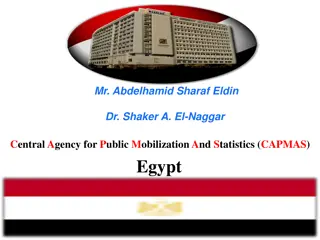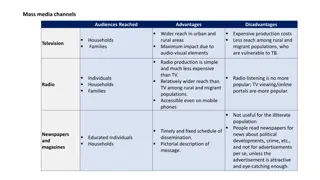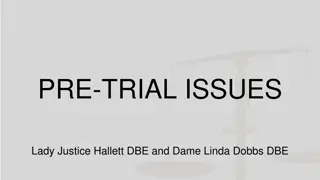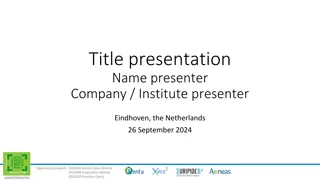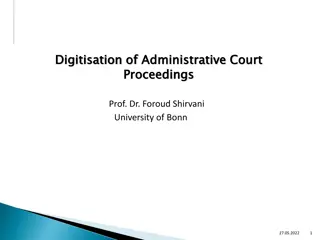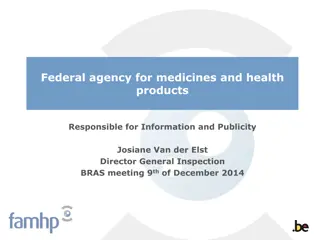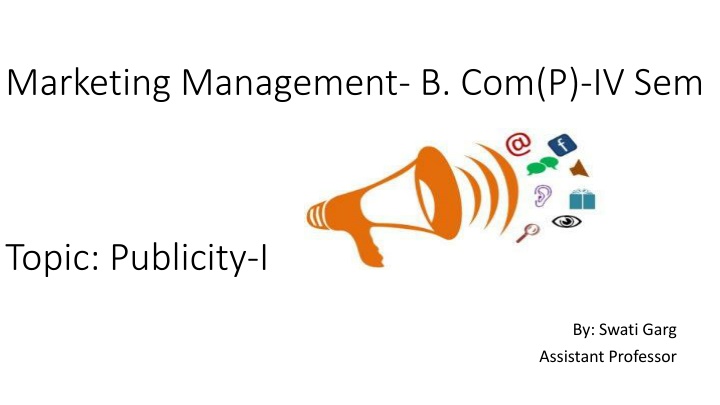
Publicity in Marketing Management for B.Com Students
Explore the concept of publicity in marketing management, including its definition, objectives, and examples. Learn how publicity can enhance corporate image, save costs, assist sales teams, and increase product credibility. Discover the importance of using publicity to remove misunderstandings, generate interest, and share newsworthy information effectively.
Download Presentation

Please find below an Image/Link to download the presentation.
The content on the website is provided AS IS for your information and personal use only. It may not be sold, licensed, or shared on other websites without obtaining consent from the author. If you encounter any issues during the download, it is possible that the publisher has removed the file from their server.
You are allowed to download the files provided on this website for personal or commercial use, subject to the condition that they are used lawfully. All files are the property of their respective owners.
The content on the website is provided AS IS for your information and personal use only. It may not be sold, licensed, or shared on other websites without obtaining consent from the author.
E N D
Presentation Transcript
Marketing Management- B. Com(P)-IV Sem Topic: Publicity-I By: Swati Garg Assistant Professor
Meaning: Publicity is the activity of increasing the awareness about a person, product or service and to grab the attention of the crowd. It is a way to project your company or a brand in front of the potential customer. Publicity generally gives the authority of an independent voice. It may turn helpful in increasing the sales from the potential customers. Publicity is not restricted to products or services only but can be attributed to politics, entertainment, arts, artists, documentaries etc.
Definition Philip Kotler: Non-personal stimulation of demand for the product or service, or business unit by placing commercially significant news about it in public medium or obtaining favourable presentation of it upon radio, television, or stage that is not paid for by the sponsor. William J. Stanton: Publicity is any promotional communication regarding an organisation and/or its products where the message is not paid for by the organisation benefiting from it.
Example: Announce an appointment, Arrange a speech or talk, Arrange for a testimonial, Art people, Conduct a poll or survey, Event sponsorship, Invent then present an award etc.
Objectives of publicity: 1. Building Corporate Image: Through publicity, a company can build or improve its corporate image. People trust more on what press reporters, columnists, or newsreaders say via mass media independently than what the company says. Publicity highlights the company s name and operations. It popularizes the name of the company. 2. Economy: It is a cost saving medium. Here, a company is not required to pay for message preparation, buying space and time, etc. The cost involved is much lower than other means of market promotion. Financially poor companies may opt for publicity. 3. Assisting Middlemen and Salesmen: Publicity can help middlemen and salesmen in performing the sales-related activities successfully. Information conveyed through publicity speaks a lot of things on behalf of sellers. Publicity makes selling tasks much easier. 4. Information with High Creditability: Sometimes, publicity is targeted to disseminate information more reliably. Customers do not express doubts on what publicity appeals. Customers assign more value to information supplied by mass media via publicity than by the advertisement.
5. Removing Misunderstanding or Bad Image: Company can defend the product that has encountered public problems. In many cases, publicity is aimed at removing misunderstanding or bad impression. Whatever a publicity conveys is more likely to be believed. 6. Building Interest on Product Categories: Publicity attracts attention of buyers. Due to more trusted news, people build interest in various products and activities. 7. Newsworthiness Information: Publicity publicizes the fact in an interesting ways. Publicity is eye-catching in nature. People do not skip the news presented by publicity that more likely happens in case of advertising. For example, when a new product is launched by the distinguished personalities like film star, eminent artist, or cricketer in a grand function, the product becomes popular within no time.
Characteristics of Publicity: Key characteristics of publicity have been briefly described in following part: 1. Meaning: Publicity is not a paid form of mass communication that involves getting favourable response of buyers by placing commercially significant news in mass media. It involves obtaining favourable presentation upon radio, newspapers, television, or stage that is not paid for by the sponsor. 2. Non-paid Form: Publicity is not a paid form of communication. It is not directly paid by producer. However, it involves various indirect costs. For example, a firm needs some amount for arranging function, calling press conference, inviting outstanding personalities, decorating of stage, other related costs, etc. 3. Various Media: Mostly, publicity can be carried via newspapers, magazines, radio, or television. For example, in case a product is launched by popular personality in a grand function, the mass media like newspapers, television, radio, magazines, etc., will definitely publicize the event.
4. Objectives: Sales promotion is undertaken for a wide variety of purposes. They may include promotion of new product, pollution control, special achievements of employees, publicizing new policies, or increase in sales. It is primarily concerns with publishing or highlighting company s activities and products. It is targeted to build company s image. In a long run, it can contribute to increase sales. 5. Control of Producer: Company has no control over publicity in terms of message, time, frequency, information, and medium. It comes through mass media like radio, newspapers, television, etc. It is given independently by the third party. It is presented as a news rather than propaganda. 6. Credibility/Social Significance: Publicity has high degree of credibility or reliability as it comes from mass media independently. It is given as news for social interest. It has more social significance compared to other means of market promotion. 7. Part of Public Relations: Publicity is a part of broad public relations efforts and activities. Public relations includes improving, establishing, and maintaining direct relations with all publics. Publicity can help improve public relations. 8. Costs: Publicity can be done at much lower cost than advertising. Company needs to spend a little amount to get the event or function publicized. 9. Effect: Publicity message is more likely to be read, viewed, heard, and reacted by audience. It has a high degree of believability as it is given by the third party. 10. Repetition: Frequency or repetition of publicity in mass media depends upon its social significance or the values for news. Mostly, it appears only once.






